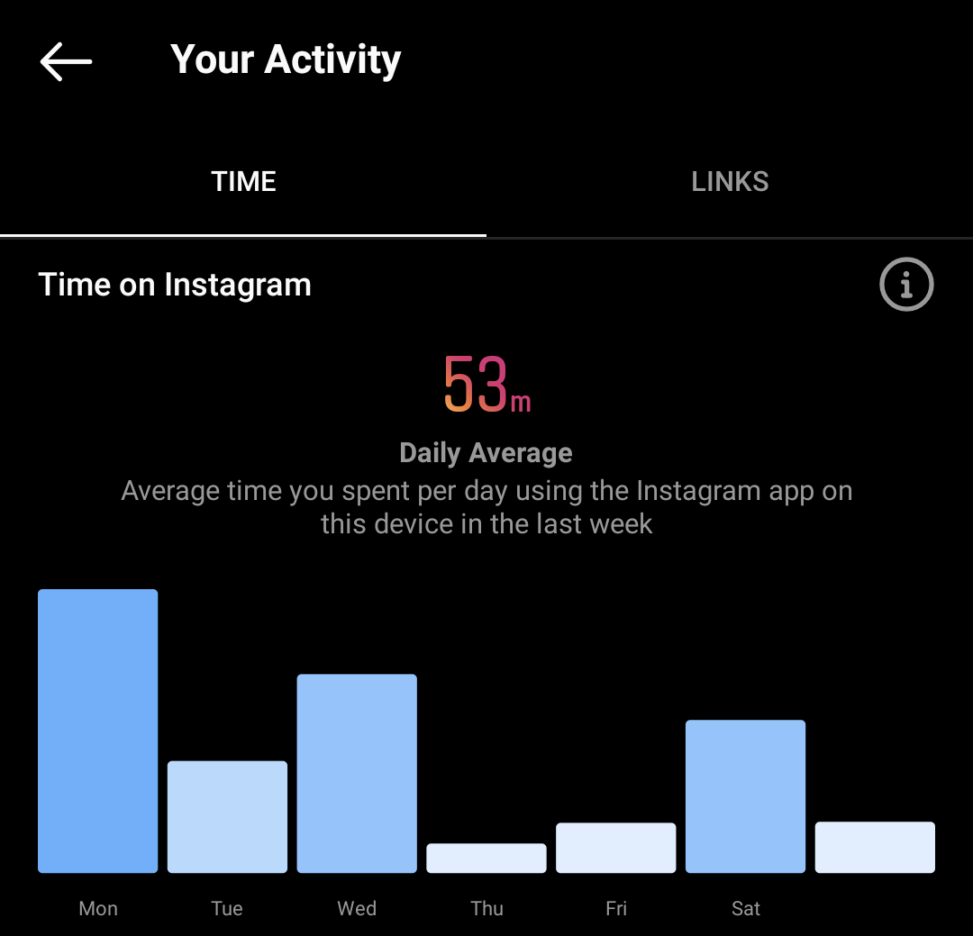Image Attribution: “SNS Assignment, Part A” by Christina Retson is licensed under CC BY. (See interactive map)
Christina Retson
Terryl Atkins
VISA 1500
31 October 2021
Assignment 3, Part A
Social media has been around for some time, connecting people through technology by sharing thoughts, ideas, and photos. Sheldon et al., states, “although the most popular social networking site (SNS) is Facebook, an overwhelming number of younger individuals prefer more recent platforms – according to one study, 78% of respondents used Snapchat and 71% used Instagram” (qtd. Smith & Anderson). Instagram and Facebook are my two most used social media networks. In comparison to many of my friends, I would say my use on these sites are much controlled than most, however, I was shocked when reviewing my usage per day. After reviewing my minute usage per day on Instagram, from October 27th-29th, I recorded 1 hour 25 minutes, 12 minutes, and 21 minutes. I average 53 minutes daily on Instagram. My Facebook usage on these same days came in at 7 minutes, 11 minutes, and 4 minutes. On these recorded days I was not creating or altering any content, just watching for pleasure.
When Facebook and Instagram were first becoming popular there were a lot of differences between the two networking sites. As years go on using these sites, I am seeing more similarities between the two. When I first started using Facebook it was mostly about updating your status, sharing photos, and playing different Facebook games. Instagram was solely for posting pictures and adding filters with captions. Now advertisements have taken over both sites, as well as “reels,” which are short videos, and you can scroll through these reels for hours. I used to only send messages and communicate with people through Facebook, but with the increased usage of Instagram, I find myself using Instagram more and more to communicate.
There are many positive aspects to social networking sites such as connecting friends, family, or strangers all over the world. Facebook and Instagram take away the physical distance and makes it easier to communicate. I have met many friends traveling and without these social networking sites, I’m not sure I would still be in contact with them now. It is much easier to send a personal message over Facebook or Instagram than to know their phone number (which can always be changing) and having to pay for a long-distance phone call. Another positive aspect of social networking sites is real-time news. Whether the news is important or not, I am often finding things out through Facebook before I hear it anywhere else. Although there are many positive aspects of social networking sites, there are many disadvantages. “Studies on pre-teenage girls [14] and female high school students [15,16] have found that Facebook users report more drive for thinness, internalization of the thin-ideal, body surveillance, self-objectification, and appearance comparisons than do non-users” (Fardouly and Vartanian, 1).
Sheldon et al., conducted a survey to see how many people are “addicted” to social networking sites. The sample consisted of 337 undergraduate students which concluded that only 9% of Facebook users and 31% of Instagram users described themselves as addicted to these social networking sites (Sheldon et al., 11). “Facebook users [who stated they were addicted] typically claimed that they checked the app “several times a day” or spent “too much time” on it (Sheldon et al., 11). Instagram users “observed that they often engaged in ritualistic or reflex usage, like “finding myself clicking into it without meaning to,” getting so used “to scrolling through my feed that I do it without thinking,” or “sometimes catching myself looking at things I’ve already seen”” (Sheldon et al., 13).
I wouldn’t consider myself addicted to social media, however, I can’t deny that I find myself scrolling for no reason without even thinking about it. I do delete my social media apps a couple of times throughout the year when I find myself scrolling too often but will always end up downloading them again. I have talked to friends who have admitted they take social media breaks because they start to compare themselves to what others are posting online, and they too spend too much time on these networks.
Works Cited
Fardouly, Jasmine, and Lenny R Vartanian. “Social Media and Body Image Concerns: Current Research and Future Directions.” ScienceDirect, June 2016, pp. 1–25.
Sheldon, Pavica, et al. “Predictors of Problematic Social Media Use: Personality and Life-Position Indicators.” Mental & Physical Health, Vol. 124(3), 24 June 2020, pp. 1–25.
